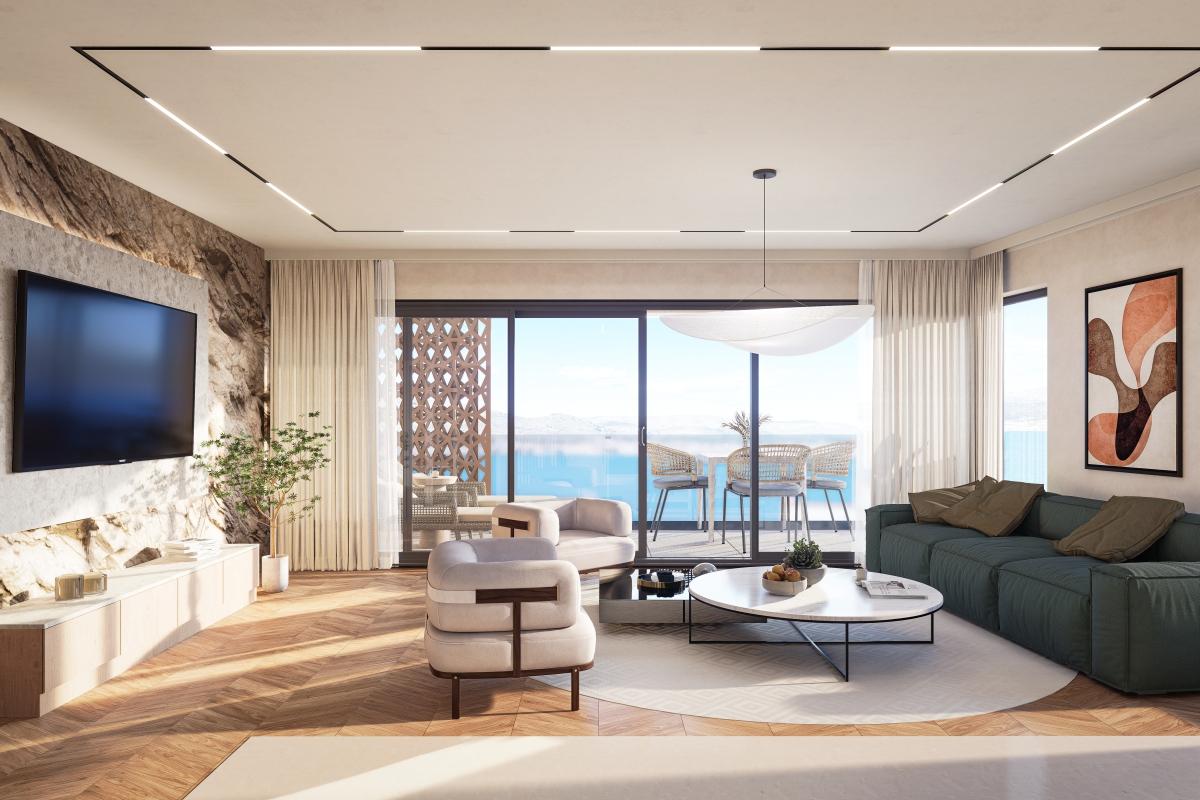Jun 27, 2025
How to Make Money by Flipping Real Estate in Croatia – Key Tips and Risks
Zorana Barada
Client Relations and Promotion Coordinator

Flipping real estate has been a way to make money for years, often highly profitable, and has become increasingly popular in Croatia recently. However, as attractive as it may be, this way of making money carries certain risks that can be significant, given the initial investment. For this reason, property flipping should be approached wisely and thoughtfully.
What Does Flipping Real Estate Mean and How Does It Work?
Simply put, flipping real estate involves buying a property, investing in its improvement and/or renovation, and selling it for a higher price than the investment to, of course, make a certain profit.
When talking about this way of making money, we should remember what ROI means, a term we have discussed before. ROI (Return on Investment) is a term popular in marketing circles, expressed as a percentage, and indicates profit relative to the investment. The percentage is obtained by subtracting the total cost from the total profit and then dividing that difference by the cost of investment and multiplying by one hundred. A high ROI percentage suggests profitability and the extent of return on investment.
Now that we are familiar with the basic terms, let’s return to flipping in practice. In the following lines, we will try to go through all the stages of the process.
The first step in flipping real estate is market research, that is, analyzing trends and demand in targeted areas. Comparing properties and their prices, market trends and their fluctuations, give us a clearer picture of profitability.
After getting to know the market, we need to focus on developing a business plan, which includes specific goals, marketing strategies, and a budget. Flipping real estate requires significant initial capital.
How to Find the Right Property to Flip?

The next step is finding potential properties for investment. This stage is the right time to contact a real estate agent if we haven’t done so already. Real estate agents are the best experts on the laws of the market in a specific area and excellent at predicting general price trends. This phase requires thoroughness and, above all, patience.
For successful flipping, it’s crucial to find the ideal property. Successful flipping, especially if we are new to this “business,” requires a team of professionals, or cooperation with real estate agents, to avoid wandering in the process, which is not uncommon if we enter unprepared and with large investments.
If we enter this amateurishly and unprepared, there is a chance we will not achieve financial gain but rather – a loss.
The property we’re looking for should be in a desirable location and have good potential. A property has good flipping potential if it requires minimal investment and, after sale, brings maximum profit.
The duration of this process depends on what we’re willing to accept or how much patience we have until we find the right investment property.
Renovation – What You (Don’t) Need to Do During Adaptation for Sale?

After finding the ideal property, it’s important to assess the structure, general condition of the building, and renovation costs. At this stage, we value the opinions and assessments of architects, designers, and contractors, depending on the complexity of the investment.
When investing in a property to flip, to increase its market value, focus on cost-effective improvements that bring the highest return on investment. These can be cosmetic changes like interior details but also more substantial investments such as renovating the kitchen, bathroom, refreshing walls, replacing joinery. If it’s a standalone building, investing in façade and roof restoration can create bigger expenses, whereas landscaping doesn’t necessarily have to.
Specifically for the area of Croatia, especially Dalmatia, an interesting and worthwhile investment is renovating old stone traditional houses. This investment can be demanding both in terms of time and finances, but it can be profitable and also bring satisfaction by participating in preserving the local cultural heritage.
Putting the Property on the Market – Flipping
When we put the prepared, either renovated or spruced-up, property back on the market, it is essential to highlight its advantages. For example, we can emphasize that it has been recently renovated and what improvements have been made to justify the asking price.
For cosmetic changes and highlighting them, a marketing strategy known as home staging helps. This strategy involves minimizing the shortcomings of the property and highlighting its best features. It involves, for example, decorating the interior with new pictures, textiles such as curtains and cushions, reupholstering chairs, or buying new furniture and details like vases, plants, and the like.

Top real estate offer in Croatia
Browse the best offer of Croatian real estate and find your dream home.
After staging the property, it’s time to create good and professional photographs and then place the property on the market.
To achieve the best marketing visibility, find the ideal buyer in the shortest time, it’s time to contact the real estate agency again. As we said, agents know the local market best and can help with property valuation or suggest the price to list it at.
Tax Aspects of Flipping Real Estate in Croatia
When flipping real estate, or if we see this as a way to make money, we need to consider the capital gains tax. This tax applies in Croatia if the property is sold within two years of purchase, not used as a personal residence, and if a profit is made from the sale.
The tax applies to the difference between the purchase and sale price. For example, if we bought an apartment for €100,000, invested €5,000 in it, and sold it for €130,000, the capital gain in the case of sale at the asking price would be €25,000. A 10% tax is paid on the capital gain.
However, if the property is owned for more than two years or we live in it, we will not need to pay the capital gains tax.

The Biggest Risks in Flipping Real Estate
Flipping real estate can be a good but also a risky investment, as we’ve emphasized several times. Market fluctuations, unexpected renovation costs, and the time it can take to sell the property are factors that can affect profit.
This risk can be mitigated by thoroughly knowing the market, deep analysis and tracking price trends.
If approached with the necessary knowledge and strategies, this can be a lucrative investment.
Conclusion
Flipping real estate in Croatia can be extremely profitable but requires good planning, market knowledge, and readiness for potential risks. The key to success lies in careful property selection, smart investments in renovation, and a good marketing strategy during the sale. With collaboration from reliable professionals such as real estate agents and proper financial management, flipping can bring a significant return on investment. However, every step must be accompanied by caution and analysis to minimize the risk of loss as much as possible.
Found this useful? Share with

Client Relations and Promotion Coordinator
Dedicated and hardworking individual known for her strong sense of responsibility and punctuality. A true workaholic, she consistently strives for excellence while maintaining a warm, empathetic, and approachable demeanor. Always eager to help and support her colleagues, she is highly valued for her kindness and collaboration. Outside of work, she has a deep passion for literature and enjoys long walks, which help her stay grounded and inspired.
Dedicated and hardworking individual known for her strong sense of responsibility and punctuality. A true workaholic, she consistently strives for excellence while maintaining a warm, empathetic, and approachable demeanor. Always eager to help and support her colleagues, she is highly valued for her kindness and collaboration. Outside of work, she has a deep passion for literature and enjoys long walks, which help her stay grounded and inspired.
Want to connect with us? We'd love to hear from you! Send us a message, and we'll get back to you shortly.



